 W
WA finger is a limb of the human body and a type of digit, an organ of manipulation and sensation found in the hands of humans and other primates. Normally humans have five digits, the bones of which are termed phalanges, on each hand, although some people have more or fewer than five due to congenital disorders such as polydactyly or oligodactyly, or accidental or medical amputations. The first digit is the thumb, followed by index finger, middle finger, ring finger, and little finger or pinkie. According to different definitions, the thumb can be called a finger, or not.
 W
WIn human anatomy, the annular ligaments of the fingers, often referred to as A pulleys, are the annular part of the fibrous sheathes of the fingers. Four or five such annular pulleys, together with three cruciate pulleys, form a fibro-osseous tunnel on the palmar aspect of the hand through which passes the deep and superficial flexor tendons. The annular and cruciate ligaments serve to govern the flexor mechanism of the hand and wrist, providing critical constraints to the flexor tendons to prevent bowstringing upon contraction and excursion of extrinsic flexor musculo-tendinous units.
 W
WBrachydactyly type D, also known as short thumb or stub thumb and inaccurately referred to as clubbed thumb, and trotters is a condition clinically recognised by a thumb being relatively short and round with an accompanying wide nail bed. The distal phalanx of affected thumbs is approximately two-thirds the length of full-length thumbs. It is a type of brachydactyly, or shortness of digits, and is associated with the HOXD13 gene.
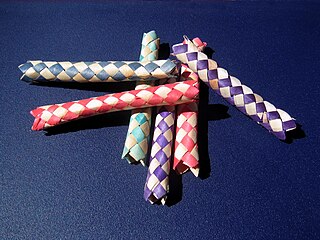 W
WA Chinese finger trap is a gag toy used to play a practical joke on unsuspecting children and adults. The finger trap is a simple puzzle that traps the victim's fingers in both ends of a small cylinder woven from bamboo. The initial reaction of the victim is to pull their fingers outward, but this only tightens the trap. The way to escape the trap is to push the ends toward the middle, which enlarges the openings and frees the fingers. The single ended version sold as a "girlfriend trap" has been available since at least 1870 when it was recorded as a "Mädchenfänger" or "girl catcher".
 W
WCongenital trigger thumb is a trigger thumb in infants and young children. Triggering, clicking or snapping is observed by flexion or extension of the interphalangeal joint (IPJ). In the furthest stage, no extension is possible and there is a fixed flexion deformity of the thumb in the IPJ. Cause, natural history, prognosis and recommended treatment are controversial.
 W
WA finger cot is a medical device used to cover one or more fingers in situations where a full glove seems unnecessary. Like medical and rubber gloves, finger cots may be made from a variety of water-tight materials including latex, nitrile rubber, and vinyl.
 W
WTo cross one's fingers is a hand gesture commonly used to wish for luck. Occasionally it is interpreted as an attempt to implore God for protection. The gesture is referred to by the common expressions "cross your fingers", "keep your fingers crossed", or just "fingers crossed". The act of crossing one's fingers mainly belongs to Christianity. The earliest use of the gesture had two people crossing their index fingers to form a cross.
 W
WThe digit ratio is the ratio of the lengths of different digits or fingers. The 2D:4D ratio is the most studied digit ratio and is calculated by dividing the length of the index finger of a given hand by the length of the ring finger of the same hand. A number of studies have shown a correlation between the 2D:4D digit ratio and various physical and behavioral traits.
 W
WIn Western culture, "the finger" or the middle finger is an obscene hand gesture. The gesture communicates moderate to extreme contempt, and is roughly equivalent in meaning to "fuck me", "fuck you", "shove it up your ass/arse", "up yours" or "go fuck yourself". It is performed by showing the back of a hand that has only the middle finger extended upwards, though in some locales, the thumb is extended. Extending the finger is considered a symbol of contempt in several cultures, especially in the Western world. Many cultures use similar gestures to display their disrespect, although others use it to express pointing without intentional disrespect. The gesture is usually used to express contempt but can also be used humorously or playfully.
 W
WThe finger gun is a hand gesture in which a person uses their hand to mimic a handgun, raising their thumb above their fist to act as a hammer, and one or two fingers extended perpendicular to it acting as a barrel. The middle finger can also act as the trigger finger or part of the barrel itself. Also, an optional clicking of the fingers can be included when forming the "gun" as to emphasise the gesture. It is similar to pointing.
 W
WFinger pulling, regionally known as Fingerhakeln (German), Trække krog (Danish), Fingerkrok, and Sormikoukku (Finnish) is a sport practiced in many regions, predominantly Bavaria, Austria, Scandinavia, and Finland.
 W
WIn the field of gesture recognition and image processing, finger tracking is a high-resolution technique developed in 1969 that is employed to know the consecutive position of the fingers of the user and hence represent objects in 3D. In addition to that, the finger tracking technique is used as a tool of the computer, acting as an external device in our computer, similar to a keyboard and a mouse.
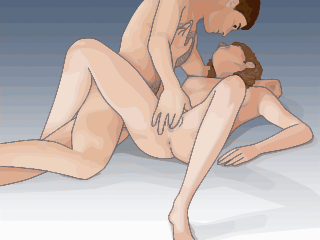 W
WFingering is typically the use of fingers or hands to sexually stimulate the vulva or vagina. Vaginal fingering is legally and medically called digital penetration or digital penetration of the vagina. Fingering may also include the use of fingers to sexually stimulate the anus.
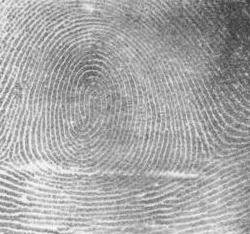 W
WGlove prints, also sometimes described as gloveprints or glove marks, are latent, fingerprint-like impressions that are transferred to a surface or object by an individual who is wearing gloves.
 W
WHitchhiking is a means of transportation that is gained by asking individuals, usually strangers, for a ride in their car or other vehicle. The ride is usually, but not always, free.
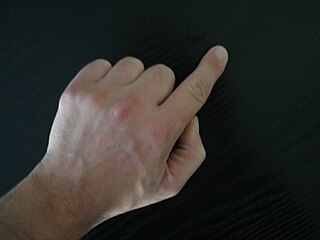 W
WThe index finger is the second finger of a human hand. It is located between the first and third digits, between the thumb and the middle finger. It is usually the most dextrous and sensitive finger of the hand, though not the longest – it is shorter than the middle finger, and may be shorter or longer than the ring finger – see digit ratio.
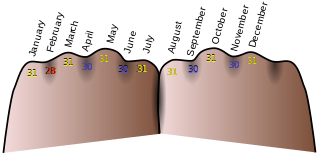 W
WThe knuckle mnemonic is a mnemonic device for remembering the number of days in the months of the Julian and Gregorian calendars.
 W
WThe little finger, or pinky finger, also known as the fifth digit, or pinkie, is the most ulnar and smallest finger of the human hand, opposite the thumb, and next to the ring finger.
 W
WA mallet finger, also known as hammer finger or PLF finger, is an extensor tendon injury at the farthest away finger joint. This results in the inability to extend the finger tip without pushing it. There is generally pain and bruising at the back side of the farthest away finger joint.
 W
WThe middle finger, long finger, or tall finger is the third digit of the human hand, located between the index finger and the ring finger. It is typically the longest finger. In anatomy, it is also called the third finger, digitus medius, digitus tertius or digitus III.
 W
WNail biting, also known as onychophagy or onychophagia, is an oral compulsive habit of biting one's fingernails. It is sometimes described as a parafunctional activity, the common use of the mouth for an activity other than speaking, eating, or drinking.
 W
WPolydactyly or polydactylism, also known as hyperdactyly, is an anomaly in humans and animals resulting in supernumerary fingers and/or toes. Polydactyly is the opposite of oligodactyly.
 W
WA fingerprint is an impression left by the friction ridges of a human finger. The recovery of partial fingerprints from a crime scene is an important method of forensic science. Moisture and grease on a finger result in fingerprints on surfaces such as glass or metal. Deliberate impressions of entire fingerprints can be obtained by ink or other substances transferred from the peaks of friction ridges on the skin to a smooth surface such as paper. Fingerprint records normally contain impressions from the pad on the last joint of fingers and thumbs, though fingerprint cards also typically record portions of lower joint areas of the fingers.
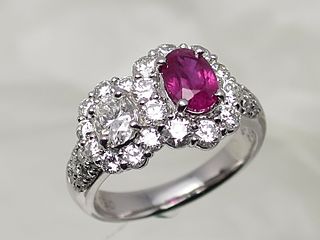 W
WA ring is a round band, usually of metal, worn as ornamental jewellery. The term "ring" by itself always denotes jewellery worn on the finger; when worn as an ornament elsewhere, the body part is specified within the term, e.g., earrings, neck rings, arm rings, and toe rings. Rings always fit snugly around or in the part of the body they ornament, so bands worn loosely, like a bracelet, are not rings. Rings may be made of almost any hard material: wood, bone, stone, metal, glass, gemstone or plastic. They may be set with gemstones or with other types of stone or glass.
 W
WThe ring finger is the third from thumb finger of a human hand. It is located between the third and fifth digits, between the little finger and the middle finger. It is so named for its traditional association with wedding rings in many cultures, though not all cultures use this finger as the ring finger. In some cultures the wedding ring is worn on the "ring finger" of the left hand and in others it is on the right hand. Traditionally, a wedding ring was worn only by the bride/wife, but in recent times more men also wear a wedding ring. It is also the custom in some cultures to wear an engagement ring on the ring finger.
 W
WSwan neck deformity is a deformed position of the finger, in which the joint closest to the fingertip is permanently bent toward the palm while the nearest joint to the palm is bent away from it. It is commonly caused by injury or inflammatory conditions like rheumatoid arthritis or sometimes familial.
 W
WThe three-finger salute, commonly known as the Serbian salute, is a salute which originally expressed the Holy Trinity, used in oath-taking, and a symbol of Serbian Orthodoxy, that today simply is an expression, a gesture, for ethnic Serbs and Serbia, made by extending the thumb, index, and middle fingers of one or both hands. The salute usually goes along with the Serbian flag, using several semantic layers to depict its historical meaning, while also being used a symbol of Serbian ethno-nationalism during the Guča Trumpet Festival.the salute remains a distinctive sign for the ethnic Serb and a symbol for belonging to the Serbian nation.
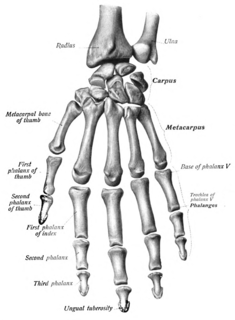 W
WThe thumb is the first digit of the hand. When a person is standing in the medical anatomical position, the thumb is the outermost digit. The Medical Latin English noun for thumb is pollex, and the corresponding adjective for thumb is pollical.
 W
WA thumb signal, usually described as a thumbs-up or thumbs-down, is a common hand gesture achieved by a closed fist held with the thumb extended upward or downward in approval or disapproval, respectively. These gestures have become metaphors in English: "The audience gave the movie the thumbs-up" means that the audience approved of the movie, regardless of whether the gesture was actually made.
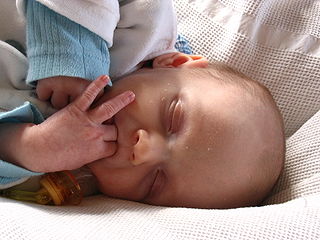 W
WThumb sucking is a behavior found in humans, chimpanzees, captive ring-tailed lemurs, and other primates. It usually involves placing the thumb into the mouth and rhythmically repeating sucking contact for a prolonged duration. It can also be accomplished with any organ within reach and is considered to be soothing and therapeutic for the person. As a child develops the habit, it will usually develop a "favorite" finger to suck on.
 W
WTrigger finger, also known as stenosing tenosynovitis, is a disorder characterized by catching or locking of the involved finger. Pain may occur in the palm of the hand or knuckles. The name is due to the popping sound made by the affected finger when moved. Most commonly the ring finger or thumb is affected.
 W
WTriphalangeal thumb (TPT) is a congenital malformation where the thumb has three phalanges instead of two. The extra phalangeal bone can vary in size from that of a small pebble to a size comparable to the phalanges in non-thumb digits. The true incidence of the condition is unknown, but is estimated at 1:25,000 live births. In about two-thirds of the patients with triphalangeal thumbs, there is a hereditary component. Besides the three phalanges, there can also be other malformations. It was first described by Columbi in 1559.